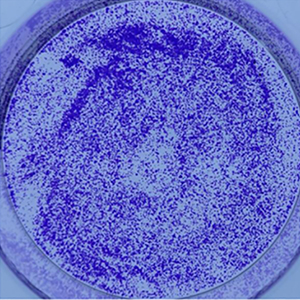Inhibition of APLN suppresses cell proliferation and migration and promotes cell apoptosis in esophageal cancer cells in vitro, through activating PI3K/mTOR signaling pathway

Submitted: 1 October 2021
Accepted: 13 July 2022
Published: 3 August 2022
Accepted: 13 July 2022
Abstract Views: 834
PDF: 505
HTML: 20
HTML: 20
Publisher's note
All claims expressed in this article are solely those of the authors and do not necessarily represent those of their affiliated organizations, or those of the publisher, the editors and the reviewers. Any product that may be evaluated in this article or claim that may be made by its manufacturer is not guaranteed or endorsed by the publisher.
All claims expressed in this article are solely those of the authors and do not necessarily represent those of their affiliated organizations, or those of the publisher, the editors and the reviewers. Any product that may be evaluated in this article or claim that may be made by its manufacturer is not guaranteed or endorsed by the publisher.
Similar Articles
- K. Okamoto, N. Kiga, Y. Shinohara, I. Tojyo, S. Fujita, Effect of interleukin-1beta and dehydroepiandrosterone on the expression of lumican and fibromodulin in fibroblast-like synovial cells of the human temporomandibular joint , European Journal of Histochemistry: Vol. 59 No. 1 (2015)
- Zhongli Shi, Wayne K. Greene, Philip K. Nicholls, Dailun Hu, Janina E.E. Tirnitz-Parker, Qionglan Yuan, Changfu Yin, Bin Ma, Immunofluorescent characterization of non-myelinating Schwann cells and their interactions with immune cells in mouse mesenteric lymph node , European Journal of Histochemistry: Vol. 61 No. 3 (2017)
- E. Varricchio, M.G. Russolillo, L. Maruccio, S. Velotto, G. Campanile, M. Paolucci, F. Russo, Immunological detection of m- and µ-calpains in the skeletal muscle of Marchigiana cattle , European Journal of Histochemistry: Vol. 57 No. 1 (2013)
- Xiaoying Yang, Xuhao Liu, Fengcheng Song, Hao Wei, Fuli Gao, Haolin Zhang, Yingying Han, Qiang Weng, Zhengrong Yuan, Seasonal expressions of GPR41 and GPR43 in the colon of the wild ground squirrels (Spermophilus dauricus) , European Journal of Histochemistry: Vol. 66 No. 1 (2022)
- R. Song, W. Xu, Y. Chen, Z. Li, Y. Zeng, Y. Fu, The expression of Sirtuins 1 and 4 in peripheral blood leukocytes from patients with type 2 diabetes , European Journal of Histochemistry: Vol. 55 No. 1 (2011)
- J. Rieger, S. Twardziok, H. Huenigen, R. M. Hirschberg, J. Plendl, Porcine intestinal mast cells. Evaluation of different fixatives for histochemical staining techniques considering tissue shrinkage , European Journal of Histochemistry: Vol. 57 No. 3 (2013)
- M. Acosta, V. Filippa, F. Mohamed, Folliculostellate cells in pituitary pars distalis of male viscacha: immunohistochemical, morphometric and ultrastructural study , European Journal of Histochemistry: Vol. 54 No. 1 (2010)
- Marina Boido, Elena De Amicis, Katia Mareschi, Franca Fagioli, Alessandro Vercelli, Organotypic spinal cord cultures: An in vitro 3D model to preliminary screen treatments for spinal muscular atrophy , European Journal of Histochemistry: Vol. 65 No. s1 (2021): Special Collection on Advances in Neuromorphology in Health and Disease
- H. Xu, X. Zhang, H. Wang, Y. Zhang, Y. Shi, X. Zhang, Continuous cyclic mechanical tension increases ank expression in endplate chondrocytes through the TGF-β1 and p38 pathway , European Journal of Histochemistry: Vol. 57 No. 3 (2013)
- S. Strobel, J.A. Encarnação, N.I. Becker, T.E. Trenczek, Histological and histochemical analysis of the gastrointestinal tract of the common pipistrelle bat (Pipistrellus pipistrellus) , European Journal of Histochemistry: Vol. 59 No. 2 (2015)
<< < 28 29 30 31 32 33 34 35 36 37 > >>
You may also start an advanced similarity search for this article.

 https://doi.org/10.4081/ejh.2022.3336
https://doi.org/10.4081/ejh.2022.3336











